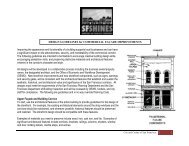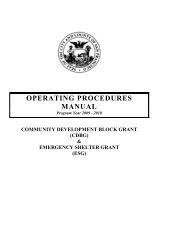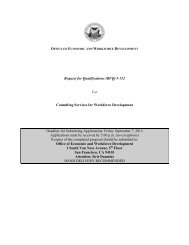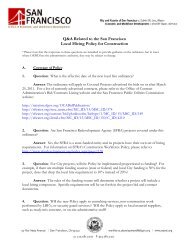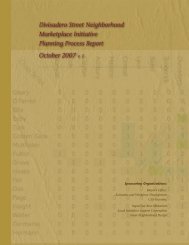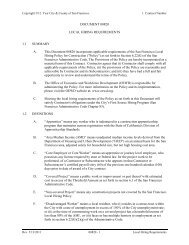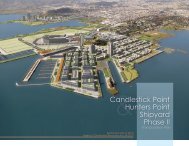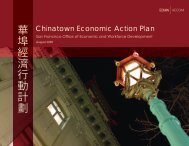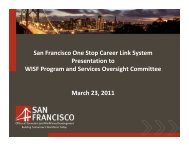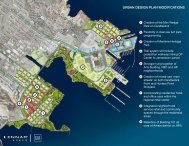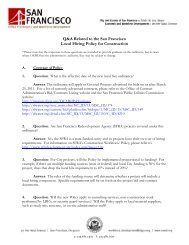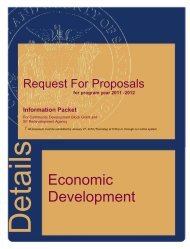The America's Cup: Economic Impacts of a Match - Bay Area Council
The America's Cup: Economic Impacts of a Match - Bay Area Council
The America's Cup: Economic Impacts of a Match - Bay Area Council
Create successful ePaper yourself
Turn your PDF publications into a flip-book with our unique Google optimized e-Paper software.
In order to better account for this leakage, the effects <strong>of</strong> the three months leading up to the <strong>America's</strong> <strong>Cup</strong> on the<br />
broader <strong>Bay</strong> <strong>Area</strong>, California, and the United States are also evaluated. <strong>The</strong>se results, comparable to Table 6, are<br />
presented below. As the geography gets bigger, the economic benefits increase.<br />
As discussed above, expenditures <strong>of</strong> local spectators in the San Francisco analysis are discounted by excluding<br />
the spending <strong>of</strong> those who live in San Francisco and those who came to San Francisco for other reasons − their<br />
expenditures would have happened regardless <strong>of</strong> the <strong>America's</strong> <strong>Cup</strong>. Similarly, when the analysis is expanded to<br />
successively larger geographies, spectator expenditures must be further discounted. <strong>The</strong> pattern <strong>of</strong> discounting<br />
used in this report is presented below. It is assumed that <strong>of</strong> the local visitors (those who drove to San Francisco),<br />
50% are from the broader <strong>Bay</strong> <strong>Area</strong>. <strong>The</strong>refore, 50% <strong>of</strong> the local spectator expenditures were discounted for the<br />
<strong>Bay</strong> <strong>Area</strong> impact analysis.<br />
Table 9: Assumptions Regarding Spectator Spending<br />
(Percentage that is included in the analysis.)<br />
Type San Francisco <strong>Bay</strong> <strong>Area</strong> California United States<br />
Local 100 50 0 0<br />
Non-Local 100 100 90 50<br />
In particular, it is assumed that half <strong>of</strong> the local visitors are from the <strong>Bay</strong> <strong>Area</strong> (the nine-county region) and that<br />
the other half is from the rest <strong>of</strong> California. Accordingly, their expenditures are completely ignored in the results<br />
pertaining to California. Similarly, the results incorporate the assumption that 10% <strong>of</strong> the non-local visitors,<br />
those arriving by air, are from California and that 40% are from the rest <strong>of</strong> the United States, with foreign visitors<br />
making up the remaining 50%.<br />
Table 10 summarizes the differences and the subsequent tables provide more detail. Each row <strong>of</strong> the table presents<br />
the economic impact on the respective region. <strong>The</strong> total effect in San Francisco is $1.372 billion, while the overall<br />
effect in the United States is $1.851 billion.<br />
Note that as broader geographies are considered, the direct effects decline. This is a result <strong>of</strong> the assumptions<br />
above regarding spectator expenditures. <strong>The</strong>se declines are significant, with direct expenditures for the country<br />
as a whole being nearly $200 million less than when only the city and county <strong>of</strong> San Francisco is considered. 14<br />
14 This is because visitors to San Francisco from Illinois provide spending in San Francisco that wouldn't otherwise occur, but it is assumed<br />
that if they had not come to San Francisco, they would have travelled to some other U.S. destination. <strong>The</strong>refore, the spending <strong>of</strong><br />
all U.S. spectators is excluded from the analysis <strong>of</strong> the United States, where some $200 million <strong>of</strong> it is included as new spending when only<br />
San Francisco is considered.<br />
28



